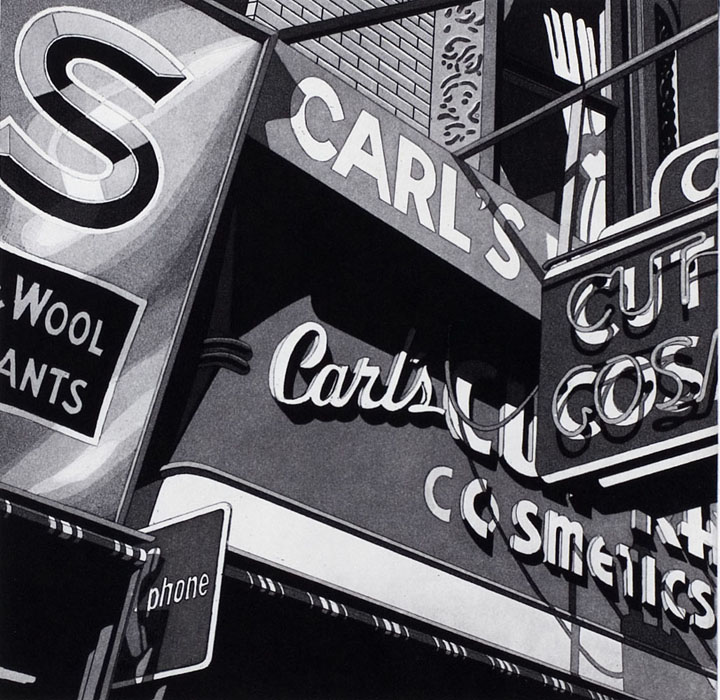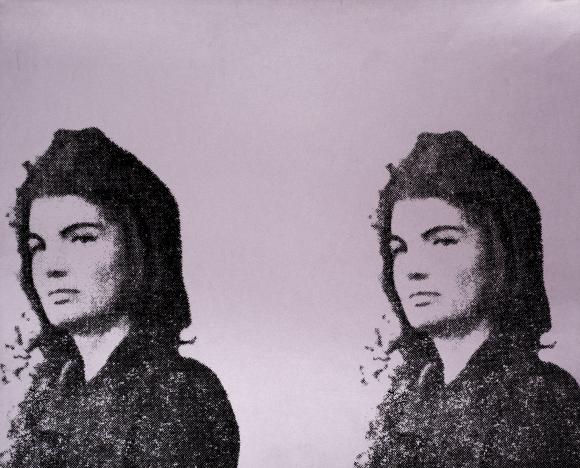PROVIDENCE, R.I. [Brown University] — The David Winton Bell Gallery and the Department of the History of Art and Architecture at Brown University will present Optical Noise: American & British Prints/Films from the 1960s-1970s from Wednesday, Jan. 25, through Tuesday, Feb. 21, 2012. On display in the lobby of the List Art Center, Optical Noise is the latest in a long and distinguished series of exhibitions prepared by first- and second-year art and architecture graduate students. The exhibition is free and open to the public.
The works featured in Optical Noise are drawn almost entirely from the Bell Gallery collection. The collection is particularly strong in works on paper, including British and American examples made as part of the print revival of the 1960s and 1970s. A selection of these prints and two related films, which have been lent to this exhibition, are the subject of Optical Noise.
The exhibition features the work of 19 artists, whose pieces are representative of several art movements from the 1960s and 1970s including pop art and photorealism. The objective of this exhibition is neither to challenge nor to replace such well-worn labels, which remain useful for various purposes, but to draw attention to what is shared by these works, specifically what might be called “optical noise.”
Beginning in the late 1950s, Robert Rauschenberg and Jasper Johns led the rebellion against abstract expressionism, a movement that valued uniqueness, personal expression, and large-scale painting. Instead of creating their own imagery, Rauschenberg and Johns borrowed materials from popular culture, introducing fragmentation, montage, and seriality into fine art-making. The visual dissonance of this new style prompted the influential American art critic Leo Steinberg to coin the phrase “optical noise.”

David Winton Bell Gallery, Brown University. Gift of Richard M. Rieser Jr.
This approach was adopted by a generation of emerging artists, both in Britain and the United States. As seen in examples from the exhibition, British pop in particular questioned the distinction between “high” and “low” culture: Eduardo Paolozzi places a cartoon character alongside a Piet Mondrian work; Peter Phillips fills the rigid formal device of the modernist grid with erotic advertisements; and Allen Jones transfigures the classical female nude into a marriage of kitsch and sex appeal. Their American pop counterparts likewise incorporate familiar elements of culture that are already pre-coded before being re-contextualized as art. For example, Mel Ramos’s poster offers a riff on ubiquitous cigarette ads while Andy Warhol’s works reproduce iconic images from Jackie Kennedy to Campbell Soup.
In contrast to the cool distance associated with pop art, other artists of this generation responded to the heated political agitations of the 1960s with similar visual techniques of fragmentation and seriality. Ronald Stein, for instance, explores the legacy of colonial imperialism, while Bruce Conner evokes discomfort by insistently presenting found footage of a nuclear explosion taken from varying perspectives.
Simultaneously reacting to and continuing the visual strategies of pop, photorealism represents a different approach to optical noise. Robert Cottingham’s lush aquatint of commercial American signage, Richard Estes’s intricate mise en abyme of reflections in an urban storefront, and Chuck Close’s fragmented lithograph of Keith all defamiliarize mundane subjects. Contrary to their label, these three photorealists freely edit the “reality” represented in their photographic studies — altering sign text, de-cluttering crowded cityscapes, and fracturing visages in a cacophony of visual play.
American and British art of the 1960s and 1970s, from pop to its photorealist contemporaries, often maintained a degree of ambiguity in its remixing of commercial media and sampling of existing images. Regardless of whether these images critique or simply replicate existing cultural conditions, this work inaugurates fresh modes of seeing and art-making. Whether screened or screened out, the prints and films presented in this exhibition resonate with the sensory upheaval of “Optical Noise.”
The David Winton Bell Gallery
The Bell Gallery, located inside List Art Center, 64 College St., is open to the public without charge Monday though Friday from 11 a.m. until 4 p.m. and 1 to 4 p.m. on Saturday and Sunday. For more information, please call 401-863-2932. For details on the exhibition and related programming, please visit brown.edu/bellgallery and www.facebook.com/bellgallery.
A new social media initiative, Re: Bell, features student, faculty, and invited guest responses to the gallery exhibitions and collections. Designed to expand the audience, widen the discussion, and enhance the resonance of contemporary art in public and scholarly discourses, Re: Bell also provides an important point of access to the unique and important holdings in the collections of the David Winton Bell Gallery.

